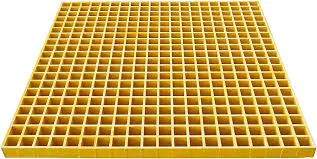
-
 Afrikaans
Afrikaans -
 Albanian
Albanian -
 Amharic
Amharic -
 Arabic
Arabic -
 Armenian
Armenian -
 Azerbaijani
Azerbaijani -
 Basque
Basque -
 Belarusian
Belarusian -
 Bengali
Bengali -
 Bosnian
Bosnian -
 Bulgarian
Bulgarian -
 Catalan
Catalan -
 Cebuano
Cebuano -
 China
China -
 China (Taiwan)
China (Taiwan) -
 Corsican
Corsican -
 Croatian
Croatian -
 Czech
Czech -
 Danish
Danish -
 Dutch
Dutch -
 English
English -
 Esperanto
Esperanto -
 Estonian
Estonian -
 Finnish
Finnish -
 French
French -
 Frisian
Frisian -
 Galician
Galician -
 Georgian
Georgian -
 German
German -
 Greek
Greek -
 Gujarati
Gujarati -
 Haitian Creole
Haitian Creole -
 hausa
hausa -
 hawaiian
hawaiian -
 Hebrew
Hebrew -
 Hindi
Hindi -
 Miao
Miao -
 Hungarian
Hungarian -
 Icelandic
Icelandic -
 igbo
igbo -
 Indonesian
Indonesian -
 irish
irish -
 Italian
Italian -
 Japanese
Japanese -
 Javanese
Javanese -
 Kannada
Kannada -
 kazakh
kazakh -
 Khmer
Khmer -
 Rwandese
Rwandese -
 Korean
Korean -
 Kurdish
Kurdish -
 Kyrgyz
Kyrgyz -
 Lao
Lao -
 Latin
Latin -
 Latvian
Latvian -
 Lithuanian
Lithuanian -
 Luxembourgish
Luxembourgish -
 Macedonian
Macedonian -
 Malgashi
Malgashi -
 Malay
Malay -
 Malayalam
Malayalam -
 Maltese
Maltese -
 Maori
Maori -
 Marathi
Marathi -
 Mongolian
Mongolian -
 Myanmar
Myanmar -
 Nepali
Nepali -
 Norwegian
Norwegian -
 Norwegian
Norwegian -
 Occitan
Occitan -
 Pashto
Pashto -
 Persian
Persian -
 Polish
Polish -
 Portuguese
Portuguese -
 Punjabi
Punjabi -
 Romanian
Romanian -
 Russian
Russian -
 Samoan
Samoan -
 Scottish Gaelic
Scottish Gaelic -
 Serbian
Serbian -
 Sesotho
Sesotho -
 Shona
Shona -
 Sindhi
Sindhi -
 Sinhala
Sinhala -
 Slovak
Slovak -
 Slovenian
Slovenian -
 Somali
Somali -
 Spanish
Spanish -
 Sundanese
Sundanese -
 Swahili
Swahili -
 Swedish
Swedish -
 Tagalog
Tagalog -
 Tajik
Tajik -
 Tamil
Tamil -
 Tatar
Tatar -
 Telugu
Telugu -
 Thai
Thai -
 Turkish
Turkish -
 Turkmen
Turkmen -
 Ukrainian
Ukrainian -
 Urdu
Urdu -
 Uighur
Uighur -
 Uzbek
Uzbek -
 Vietnamese
Vietnamese -
 Welsh
Welsh -
 Bantu
Bantu -
 Yiddish
Yiddish -
 Yoruba
Yoruba -
 Zulu
Zulu
Durable and Stylish Fiberglass Handrails for Safe and Elegant Spaces
Exploring the Benefits and Applications of Fiberglass Handrails
In recent years, fiberglass handrails have gained significant traction across various industries. These innovative structures are not only practical but also offer a range of benefits that make them increasingly popular in both residential and commercial settings. Understanding the composition, advantages, and diverse applications of fiberglass handrails reveals why they are becoming a go-to choice for builders and designers alike.
Fiberglass handrails are made from a composite material consisting of glass fibers and resin. This combination provides an incredibly strong yet lightweight structure that can withstand a variety of environmental factors. Unlike traditional handrail materials such as wood or metal, fiberglass does not rust, corrode, or deteriorate when exposed to weather elements, making it ideal for outdoor and industrial applications.
One of the most notable advantages of fiberglass handrails is their durability. They are resistant to chemicals, moisture, and UV rays, which can significantly prolong the lifespan of the handrail. This makes them particularly appealing for environments that involve exposure to harsh chemicals, such as factories, laboratories, and chemical processing plants. Moreover, fiberglass handrails require minimal maintenance, saving time and costs associated with repairs and replacements.
Another key benefit is the safety features that fiberglass handrails can provide. Many fiberglass handrails are designed with slip-resistant surfaces, which enhance stability and safety, especially in wet or icy conditions. Additionally, fiberglass can be molded into various shapes and heights, making it customizable to meet specific safety standards required for different construction projects. For instance, certain applications may require higher handrails to ensure the safety of individuals in various environments, from stairways to elevated platforms.
fiberglass handrail

Aesthetically, fiberglass handrails offer the flexibility to be designed in a variety of colors and finishes. This versatility allows architects and designers to create visually appealing structures that complement their projects. Whether it’s a sleek modern design or a more traditional look, fiberglass handrails can enhance the overall aesthetic of a building or space.
The environmental impact of materials used in construction is becoming increasingly important. Fiberglass handrails are a viable option for those seeking sustainable building materials. Many manufacturers are now producing fiberglass handrails using recycled materials, which reduces waste and contributes to greener construction practices. This aspect appeals not only to eco-conscious builders but also to clients looking to reduce their environmental footprint.
Furthermore, the ease of installation is another highlight of fiberglass handrails. Many systems are prefabricated, allowing for quick and efficient installation on-site. This significantly reduces labor costs and project timelines, making them a cost-effective choice for builders and contractors.
In summary, fiberglass handrails present a myriad of benefits that make them a standout choice in various settings, from residential properties to industrial sites. Their durability, safety features, aesthetic versatility, environmental sustainability, and ease of installation contribute to their growing popularity. As the demand for reliable and efficient construction materials continues to rise, fiberglass handrails are undoubtedly paving the way for future developments in architectural design and safety standards. Whether for new constructions or renovations, embracing this innovative material can lead to both practical advantages and an enhanced aesthetic appeal in any project.
Latest news
-
Exploring the Benefits of Top Hammer Drifter Rods for Enhanced Drilling PerformanceNewsJun.10,2025
-
High-Precision Fiberglass Winding Machine for GRP/FRP Pipe Production – Reliable & Efficient SolutionsNewsJun.10,2025
-
FRP Pipes & Fittings for Shipbuilding - Corrosion-Resistant & LightweightNewsJun.09,2025
-
Premium FRP Flooring Solutions Durable & Slip-ResistantNewsJun.09,2025
-
Premium Fiberglass Rectangular Tanks Durable & Lightweight SolutionNewsJun.09,2025
-
Tapered Drill String Design Guide Durable Performance & UsesNewsJun.09,2025









